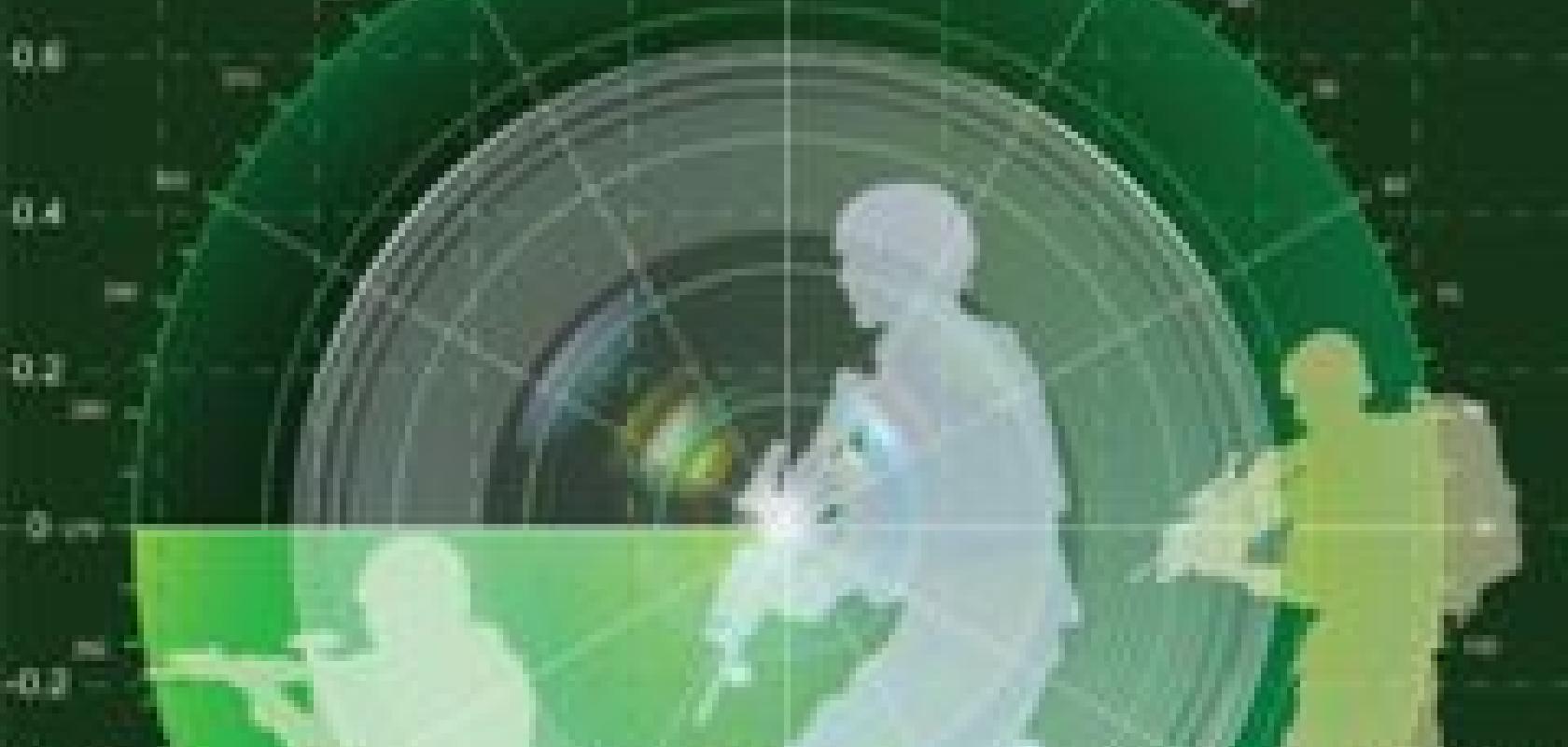Imaging for military purposes dates back to at least the First World War where aircraft with cameras would take photographs for battle damage assessment and reconnaissance of the enemy’s front lines. Almost 100 years later imaging in the military with aircraft delivers full motion video of ongoing combat, sometimes called Kill TV, but some of the latest applications include ground-based detection and identification of a range of weapon threats.
Ground-based imaging for detection will include robots and unmanned ground vehicles (UGV). Those machines need vision systems and the RobotEye product, from Ocular Robotics of Hurstville, Australia, has been provided for military applications. But in military style, specific reference case studies can’t be given for confidentiality reasons. What can be said is that its technology is suited for manned and unmanned military ground, marine and air vehicles. These sorts of application fields involve tracking moving objects, such as human beings moving freely in an open environment. To do this, sometimes the camera itself is fitted on a moving vehicle, ground-based or airborne, and needs either to focus on one fixed target point or to perform a 360° scan of its surroundings.
For this, Ocular Robotics designed RobotEye, for which the three-dimensional movement is limited to the optics, while the camera itself remains fixed. This means the aperture, through which the light is collected, moves in different directions extremely rapidly while the actual image sensor within the system is stationary. ‘RobotEye relies on an innovative optical path that can move,’ explains Mark Bishop, founder and CEO of Ocular Robotics. This approach overcomes the mechanical restrictions of turntable, pan/tilt systems or gimbals, which at high speed can’t deliver the rapid reaction needed or the precision of movement. As such, RobotEye combines extremely high slew speed with high acceleration rates. Because of these mechanical capabilities, the system can perform a wide variety of tasks such as tracking a fast-moving object and focusing on a fixed point and stabilising the image when mounted on a moving vehicle, or even both at the same time. Coupled with a head-mounted display into a head-slave system, RobotEye enables a human operator to inspect remotely a dangerous area such as a fire, a hazardous area or a battlefield without being exposed to the danger. The RobotEye’s optics follow the slightest movements of the operator’s head in real time without any lag.
Ocular Robotics worked with Allied Vision Technologies (AVT) for the RobotEye cameras and all the software applications developed for RobotEye use the AVT GigE API. ‘GigE Vision cameras from Allied Vision Technologies were the best choice for us for many reasons,’ explains Bishop. ‘One of them is the excellent API, which offers a very good programming platform for our software solutions.’
RobotEye has been designed to operate in harsh outdoor environments at temperatures ranging from -20°C up to 70°C. The sensor, components and control electronics are stationary and protected in RobotEye’s enclosure. According to AVT, the product’s low mechanical stress concept ensures a very high durability at high levels of performance. The system’s optical port can be fitted with any C-mount camera so it can be adapted easily to specific application requirements with the most suitable camera model.
Sensing danger
In terms of imaging sensors for military equipment, responsiveness is key and the sensors have to be fast to cope with missile launches and attacks by combatants with small fire arms. Rodrigo Linares, business development manager of Madrid-based New Infrared Technologies (NIT), comments that the main focus for the company when it began was on military applications and that the speed of the sensor was ideal for detecting a muzzle flash from a sniper shot or a projectile launch, among other scenarios. NIT manufactures sensors based on a technology developed by the Spanish MOD, before transferring this to private industry.
The imaging arrays to detect muzzle flashes and missile launches can be low resolution and still provide spatial information about the detected event, whether it is a muzzle flash or not. ‘The muzzle flash takes place in 1.5 milliseconds; we’re talking about small gun muzzle flashes and this event takes 1.2-1.5 milliseconds, so you need a system that is able to sample at very high speed, [around] 2kHz,’ explains Linares.
The company has conducted tests using several rounds of 7.62mm calibre ammunition and found that at a distance of 100 metres its sensors were able to detect the firearm’s muzzle flash. Taking these results to technical conferences, NIT worked with a military technology institute in Poland. That institute then bought one of NIT’s systems for its muzzle flash research.
In its research, the institute showed the detector was good at detecting small calibre guns at ranges of up to 250m. ‘So, basically what we have is a product capable of providing images, infrared images, at high speed and is capable of detecting very short events such as muzzle flashes up to 250m away,’ says Linares. ‘For larger guns, larger calibres, we have made our own calculations and we could detect [gunfire at] more than 500m, and up to 2km for RPG [rocket-propelled grenades] and heavy artillery.’
But Linares stresses that the company does not sell muzzle flash specific technology; it is just that NIT’s technology can detect infrared energy that quickly: ‘We don’t sell systems especially optimised for muzzle flashes; we sell sensors capable of detecting this kind of event and in a very short timeframe.’
The company is now focused on improving the speed at which events can be detected and at a high resolution. While NIT’s detector provides a resolution of 32 x 32 pixels, in the months to come the company will have an 80 x 80 pixel resolution detector that can record at 2,000fps, while achieving 10,000fps with its 32 x 32 pixel detector.
The high-speed sensor is also ideal for time-resolved spectroscopy, which could be important when matching a temperature IR signature against a database of signatures. By sampling at very high speeds, Linares explains, users can have very good temperature signatures that will allow their detection system to discriminate between weapon calibres or identify a false alarm.
To reduce false positives, NIT operates in the medium IR waveband, to avoid SWIR radiation from sunlight. In addition, exhaust flames from some missile systems emit in the MWIR waveband. ‘RPG exhaust flames are in the medium [IR] waveband. It is a very demanding application, because you have less than 1 millisecond for detection and then deterring the threat with some countermeasures,’ says Linares. The temperature of the flames of exhaust gases from a projectile when it is in flight also provides a strong emission in the MWIR waveband, specifically in the 3-5μm range (missile plumes can emit at around 4.2-4.3μm). NIT has also been working with the INTA, the aerospace techniques institute, a part of the Spanish MOD, in the characterisation of turbine exhaust gases using high-speed MWIR cameras.
The NIT detectors are small enough for several to be installed on a vehicle. To create active protection systems for land, air or sea military vehicles, several of these systems are deployed on the platform to cover 360°. This all around field of view can involve several systems operating to detect an event and discriminate as to whether it is a muzzle flash or not, or where it comes from. It is not enough just to say that a firearm has been fired at 100 or 250m or further; the service men and woman need to know where the incoming fire is coming from.
‘If you combine this sensor with a sound sensor you will have more robustness against false alarms, because you have two sensors and you have range information. You can detect the muzzle flash event and a few milliseconds later the sound of the explosion and measuring that distance in time will let you have localisation and the distance [to the enemy],’ explains Linares.
Another advantage for NIT’s IR detectors, Linares stresses, is that, as it is an uncooled technology, there is no need for the cooling systems deployed in the past for infrared technologies. No cooling system means lower cost per unit, no maintenance costs and no need to wait for the detectors to cool down.
As imaging technology and the computational power to process and analyse continues to improve and get cheaper and faster, the all important time between sensor and military response can only diminish. It will be interesting to see if the split-second decision making will be left to the human soldier or more and more to automatic systems.


